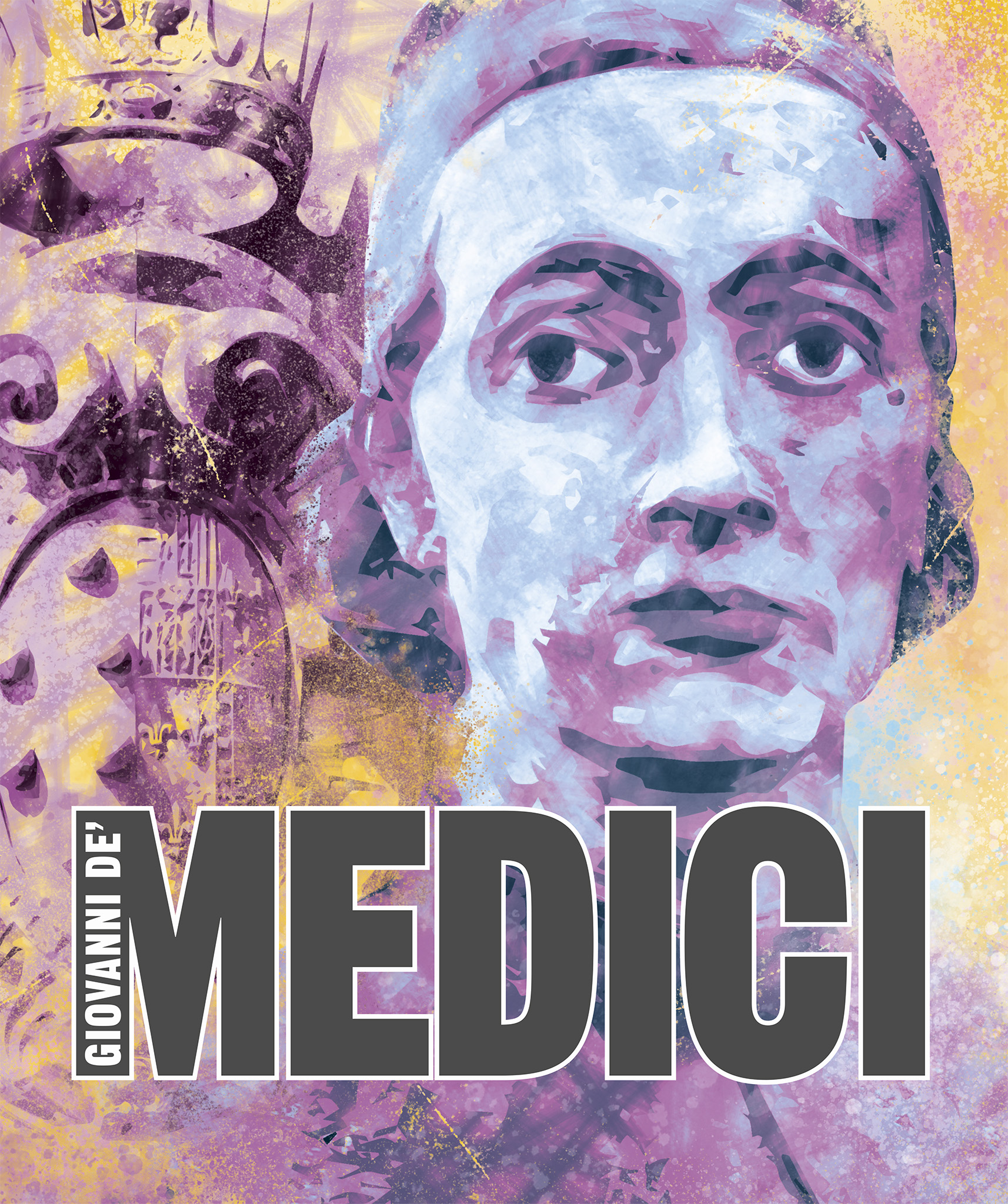
GIOVANNI DE’ MEDICI
1360–1429
In founding the Medici Bank, the largest financial institution in 15th-century Europe, Giovanni de’ Medici established the power base for the House of Medici. The family acquired vast wealth and political influence, becoming hereditary rulers of Florence and great patrons of the arts, architecture, and the sciences.
The Medici originated from the Mugello region of northern Tuscany, Italy. By the 14th century, many of the family had moved to Florence, where they were involved in its burgeoning banking sector. However, they were by no means the wealthiest family in a city that was becoming the greatest financial center in Europe. Giovanni di Bicci de’ Medici was born around 1360. His father was not particularly successful, and when he died of plague in 1363, his estate amounted to only six florins to divide among his five sons.
The Medici Bank
Giovanni started his career in 1382 as an apprentice to his kinsman Vieri di Cambio de’ Medici, who owned a bank in Florence. Giovanni was sent to work at its branch in Rome, servicing the needs of the bishops and cardinals who attended the papal court. He was so successful that he became its manager after three years, then a junior partner, and eventually took over from Vieri altogether by using his dowry to buy Vieri’s stake. In 1393, Giovanni established the Rome branch of the bank as his own independent firm, taking on Benedetto di Lippaccio de’ Bardi, a member from another powerful Florentine banking family, as his partner. Four years later, he moved the bank’s head office to Florence, effectively founding the Medici Bank.
The Rome branch continued to operate and was soon joined by new “banks” in Naples and Venice. Giovanni adopted a cautious business strategy and prioritized consolidation over rapid expansion. In addition to his banking business, he purchased properties in Florence, farmland in Tuscany, mines, and two woolen cloth workshops.
“He died exceedingly rich in money, but still more in good fame and the best wishes of mankind.”
Niccolò Machiavelli, 1526

Giovanni de’ Medici’s sons Cosimo and Lorenzo followed their father into the family banking business, helping secure the Medicis as the most powerful family in Europe, with unrivaled political, economic, and cultural influence.
“I have not only maintained my reputation but increased my influence.”
Giovanni de’ Medici, 1429
Politics and power
Giovanni was popular with the citizens of Florence and tried to avoid political intrigue. He reluctantly served as a member of the civic government in 1402, 1408, and 1411, and took up the prestigious office of gonfaloniere (titular head of Florence’s government) only once, in 1421.
In 1420, Pope Martin V appointed the Medici Bank to act as papal bankers, which was crucial to the growing prosperity and power of the Medici family. That same year, Giovanni formally withdrew from the banking business. While his sons Cosimo and Lorenzo began to take on the signing of contracts, he continued to act as an advisor, ensuring a smooth transition. Giovanni urged his sons to remain aloof from civic politics, advising them to become involved only if absolutely necessary. A modest man, Giovanni was made Count of Monteverde by Martin V in 1422, but he did not use the title, preferring to remain a citizen.
Medici’s legacy
Giovanni contributed significantly to the improvement of Florence with several charitable projects, including a hospital for orphans. At the time of his death in 1429, Giovanni’s careful succession plans ensured that the Medici Bank carried on its business without disruption and would, under the stewardship of his more able son Cosimo, continue to expand throughout Italy and beyond.

AMADEO P. GIANNINI

Founder of the Bank of Italy, and later the Bank of America, Amadeo P. Giannini built a banking empire that served ordinary people through local branches and fueled economic growth in the US.
Born in California to Italian immigrant parents, Giannini (1870–1949) founded the Bank of Italy in San Francisco in 1904, seeking out new customers among the city’s working class. The bank flourished, and from 1909, Giannini was able to purchase other Californian banks. By 1918, the Bank of Italy had branches statewide. Giannini’s bank continued to expand and, in 1930, changed its name to the Bank of America. By the time he died in 1949, it had more than 500 branches.
MILESTONES
BEGINS CAREER
Apprenticed to banker Vieri di Cambio de’ Medici in 1382 and moves to work at his bank’s Rome branch.
FOUNDS MEDICI BANK
In 1397, moves bank’s head office, now in his control, from Rome to Florence as an independent firm.
COURTS INFLUENCE
Backs papal candidate Baldassarre Cossa in 1410, initiating a profitable relationship with papacy.
ENSURES STABILITY
Formally retires from banking business in 1420, handing over control to his sons Cosimo and Lorenzo.
